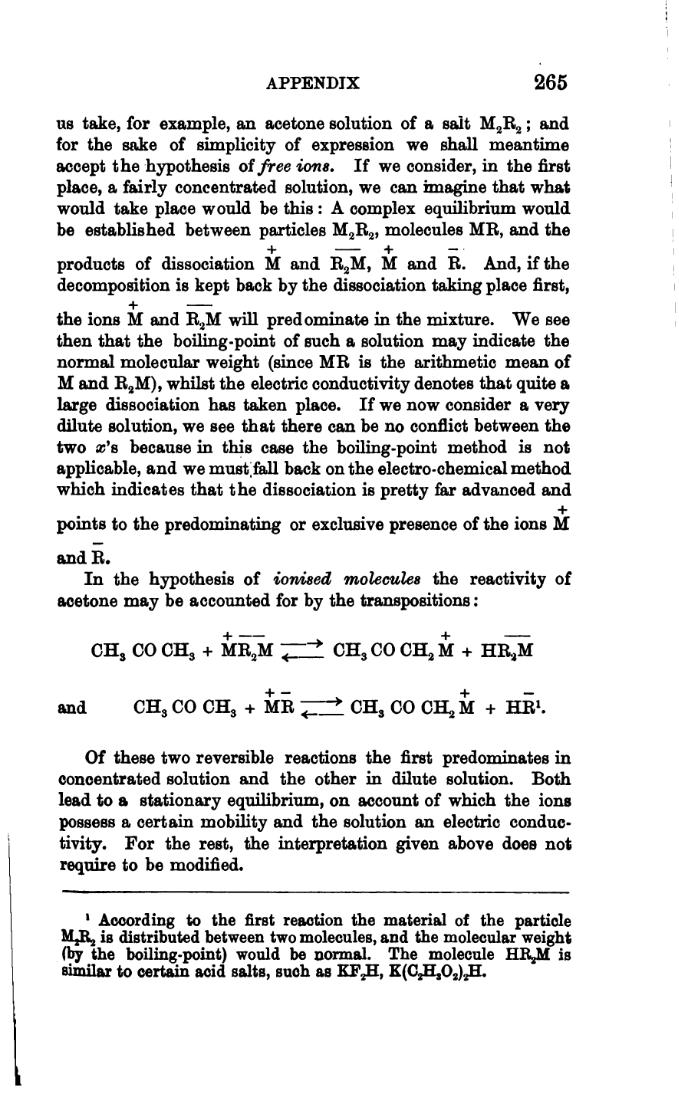us take, for example, an acetone solution of a salt M 2 B 2 ; and
for the sake of simplicity of expression we shall meantime
accept the hypothesis of free ions. If we consider, in the first
place, a fairly concentrated solution, we can imagine that what
would take place would be this : A complex equilibrium would
be established between particles M 2 E 2 , molecules ME, and the
+ — + -
products of dissociation M and B 2 M, M and R. And, if the
decomposition is kept back by the dissociation taking place first,
+ —
the ions M and B 2 M will predominate in the mixture. We see
then that the boiling-point of such a solution may indicate the normal molecular weight (since MB is the arithmetic mean of M and B 2 M), whilst the electric conductivity denotes that quite a large dissociation has taken place. If we now consider a very dilute solution, we see that there can be no conflict between the two x } 8 because in this case the boiling-point method is not applicable, and we must, fall back on the electro-chemical method which indicates that the dissociation is pretty far advanced and
+ points to the predominating or exclusive presence of the ions M
andB.
In the hypothesis of ionised molecules the reactivity of acetone may be accounted for by the transpositions :
��+ —
��0H 3 CO 0H 3 + MB 8 M ' — T OH 3 CO 0H 2 M + HB a M
��+ -
��and CH 3 CO CH 3 + MB ~^_ CH 3 CO C^ M + HE 1 .
Of these two reversible reactions the first predominates in concentrated solution and the other in dilute solution. Both lead to a stationary equilibrium, on account of which the ions possess a certain mobility and the solution an electric conduc- tivity. For the rest, the interpretation given above does not require to be modified.
��1 According to the first reaction the material of the particle M^Rj is distributed between two molecules, and the molecular weight (by the boiling-point) would be normal. The molecule HR^M is similar to certain acid salts, such as KFjH, lUpgi&^gi.
��\
�� �
